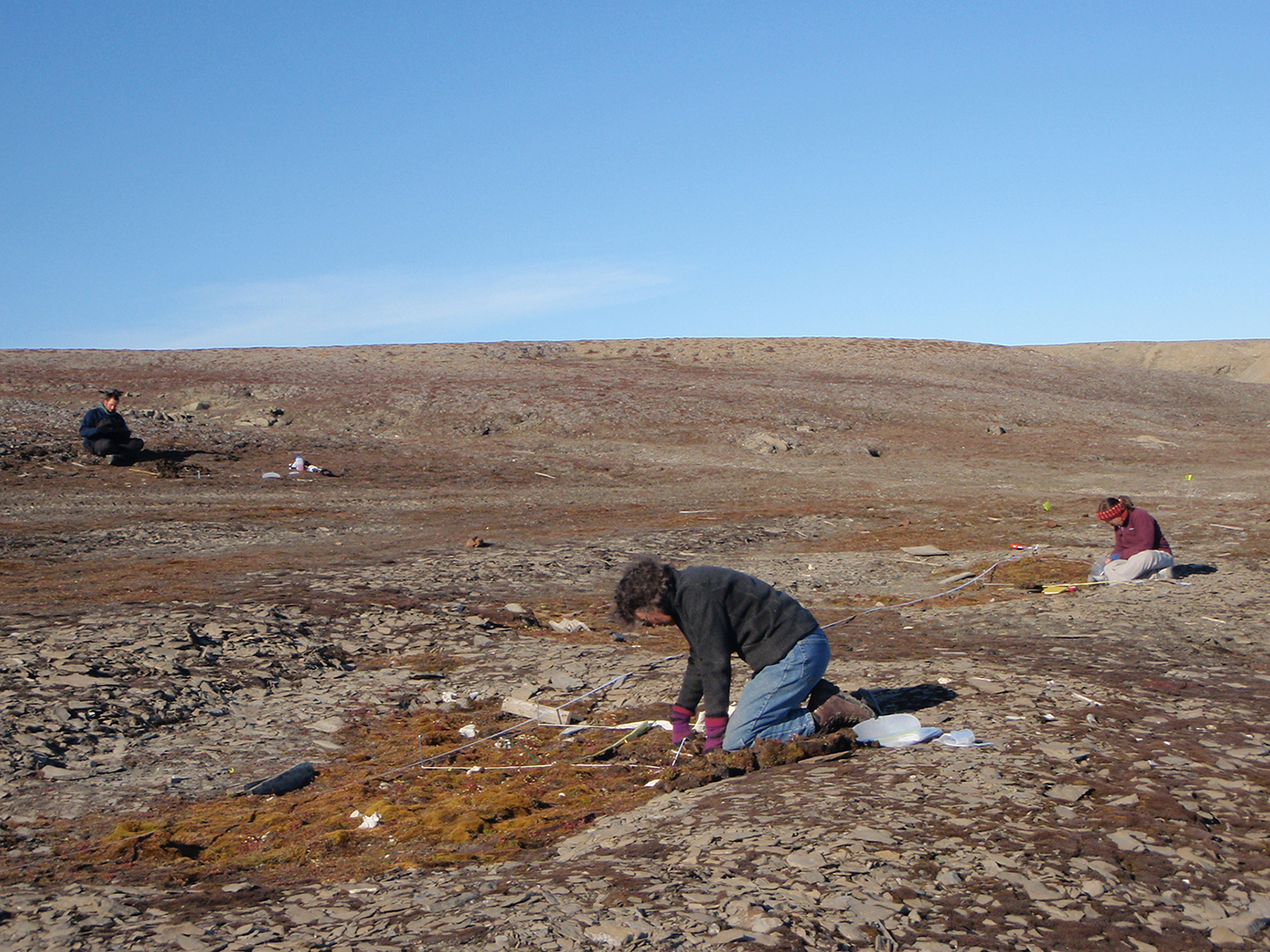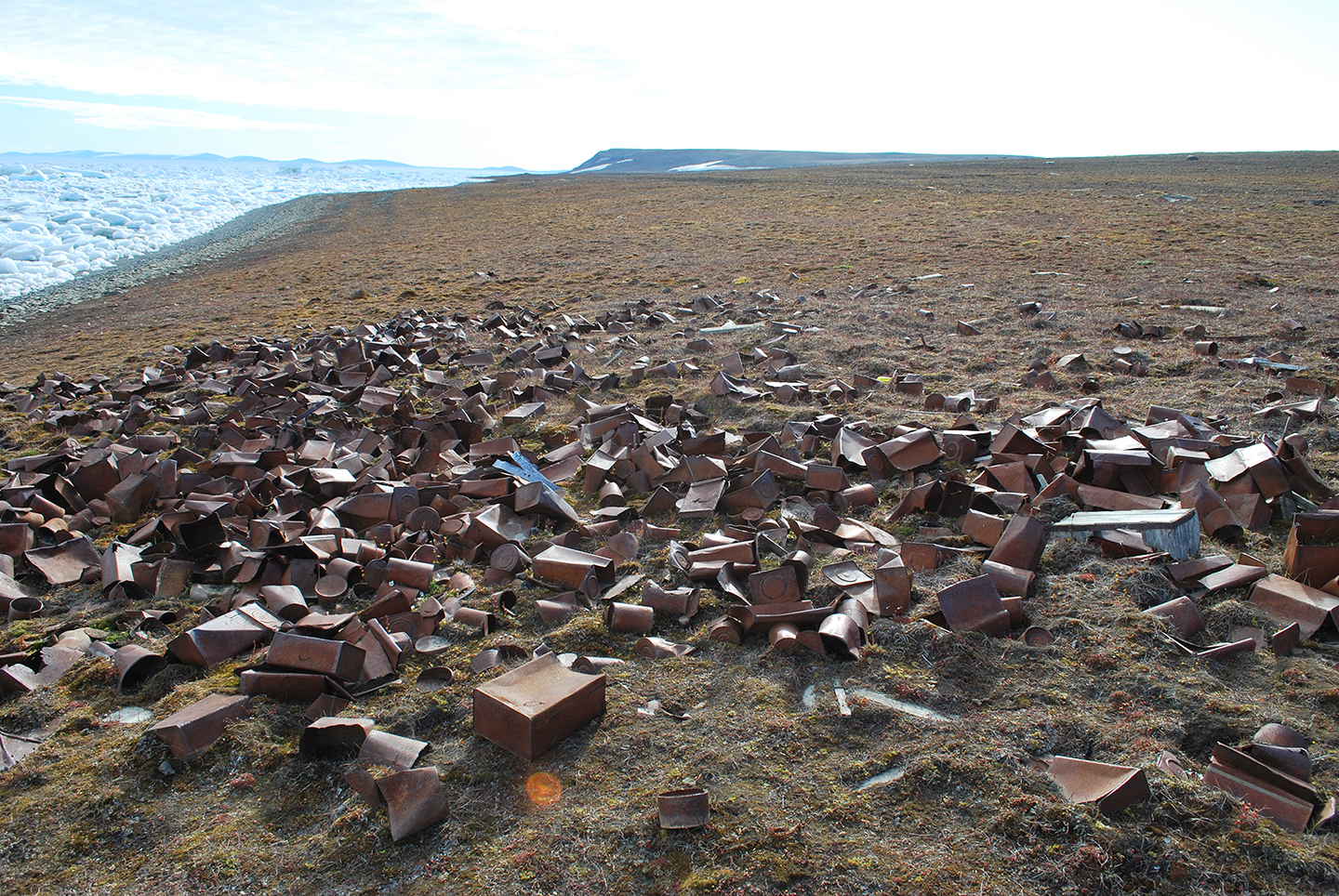Peary and the Inughuit at Cape Sheridan

Susan Kaplan (foreground) and Genevieve LeMoine (right) excavating in the remains of Peary’s crate houses. On the far left, Frédéric Dussault excavates in the remains of a possible snow house. August 1, 2011. Photo by Samson Simeone.
This project was part of an initiative to better understand the social dynamics among expedition members and determine whether excavation of sites in the region was warranted.
In 1905-06 and again in 1908-09 Peary mounted major expeditions to reach the North Pole. With a custom designed ship, the SS Roosevelt; a team of American assistants; and some 50 Inughuit men, women, and children from northwest Greenland, he sailed to Cape Sheridan on the northeast coast of Ellesmere Island in Canada’s High Arctic. There, the crew allowed the ship to freeze in for the winter. Over the fall and winter people prepared for a sledge journey over the sea ice to the North Pole.
Peary relied heavily on the Inughuit. The men hunted, drove dog sledges, and helped train the inexperienced Western members of the team in the art of travel across sea ice. The women sewed traditional fur clothing for the expedition members as well as for their families. The Inughuit were essential to the success of the expedition, but because they left no written or photographic record, we know little about their day-to-day lives while living on this remote and barren coast, far from home. American expedition members kept journals, but only occasionally included remarks about their Inughuit companions.
While at Cape Sheridan, Peary’s men constructed workshops on shore at Floeberg Beach. The Inughuit constructed homes nearby rather than living on the ship as the Americans did. These shore-based structures, along with associated disposal areas, provide a way to learn something about the lives of the Inughuit at Cape Sheridan.
The archaeological remains at Cape Sheridan were first investigated in the early 1980s by Parks Canada archaeologists investigating historic sites across the Arctic. They collected most of the surface artifacts as a precaution against looting and excavated some of the architectural features.
We traveled to Cape Sheridan in the summer of 2011 for two weeks of survey, mapping, and test excavation. We remapped most of the archaeological features at Floeberg Beach and excavated test units in two of the 1908-09 structures. We also photo-documented and collected a limited number of modified tin cans from a large can dump left by the expedition. In 2012, we traveled to the Prince of Wales Northern Heritage Centre in Yellowknife to study the materials collected by Parks Canada in the 1980s. As a result of the work in the field and at the museum, we concluded that the site is currently stable, so more extensive excavations are not warranted, although rising sea levels, and increased ice scour and beach erosion may change this assessment.
The archaeological material shed light on some aspects of the lives of the Inughuit at Cape Sheridan. The modified cans are particularly interesting. The use of cans as a raw material by Indigenous people in the nineteenth century is known from other parts of North America, but at Cape Sheridan the diverse items people made, ranging from small funnels fashioned from folded can lids, to cups and pots, is unique. Most intriguing are lamps or stoves made to burn kerosene or alcohol. These are very different from traditional Inughuit stone lamps, which burn rendered blubber, and may have been challenging for women to operate. Managing the lamp, which is the sole source of heat and light in a traditional house, is a highly valued skill and symbolic of women’s role in Inughuit society. Blubber would have been in short supply at Cape Sheridan, and women would have been forced to switch to unfamiliar fuel and stoves/lamps. This likely added to the considerable stress they were under living and working in very unfamiliar conditions while the Inughuit men were off sledging. Peary wrote about the ways in which he helped the Inughuit with whom he worked. Yet this archaeological work, as well as studies of expedition journals that relatively recently came to light, suggest a more complex situation and provide insights into the many stresses felt by Inughuit women in particular.
People were able to follow our work on a blog, including audio posts filed from the field. We have presented a number of lectures to the general public as well as to more specialized audiences. One of these, to archaeology students at the University of Laval, Quebec, is available online.
This grant was funded by the National Science Foundation, Office of Polar Programs grant 1134811.


